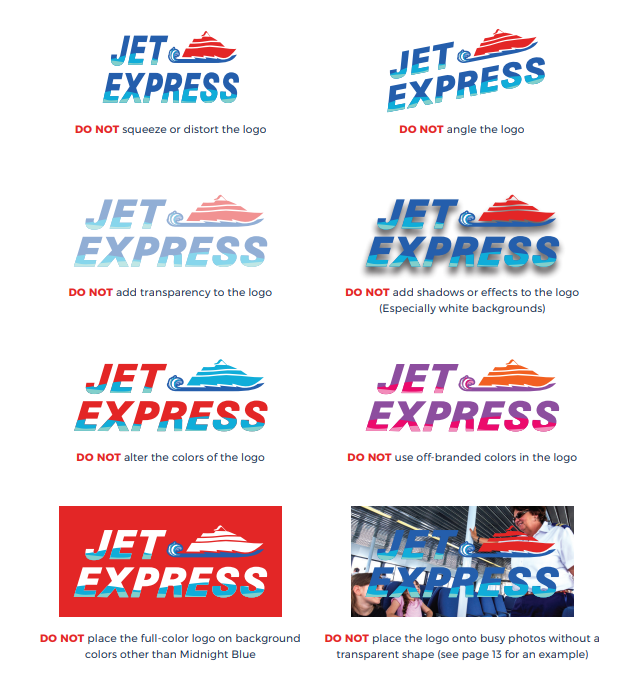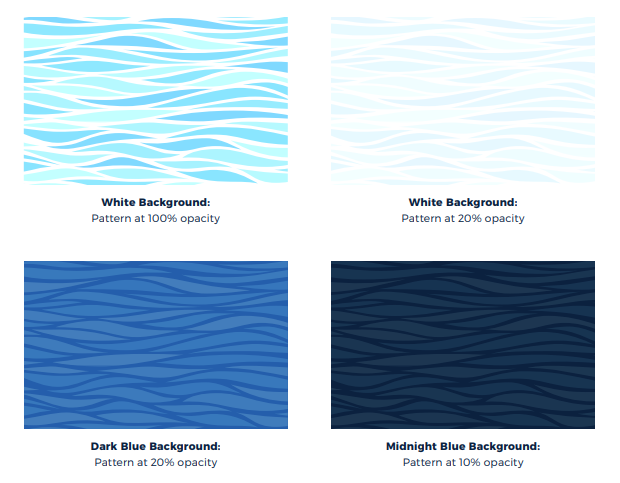Pump Up Your Brand Standards
If you’ve read our past blog series about Logo Design, you’ve read some great information on how you should use you logo effectively and consistently. However that post just scratched the surface with maintaining your brand only from a visual standpoint. We’ve said this several times, but to be clear, your logo is not your brand. In fact your brand actually goes well beyond its visual identity. While we will be covering the importance of a consistent look and feel, we will also be addressing what lies beyond that, such as brand voice, brand messaging and what actually gives your brand its personality.
What is a brand style guide?
To start, let’s give a quick refresher on the definition of a brand style guide. A brand style guide is the primary communicator that outlines and defines what your brand looks like, speaks like, and acts like in various media, such as print, web or broadcast. Quite surprising, too few companies actually take the time to truly define their brand.
We’ve created our fair share of brand guideline documents. Some of these have been the simplest form of guides that show only the logo, typefaces and color palettes, and others go into much more detail in full-length documents that contain photography treatments, textures and iconography. But that isn’t always enough. Our most robust of guides include all the above and also dive beyond visuals exploring brand voice, brand messaging and brand personality.
Visual Standards
This goes without saying, but the most basic of brand standards should incorporate logo variations, color palettes and typefaces.
The Logo
Like we’ve said before, your logo is not your brand—however it is one of the most important parts of your brand. It’s the one thing that everyone should recognize immediately as your brand and only yours. To make it recognizable, it must be used consistently. That includes how it appears on white backgrounds, color backgrounds and in grayscale. Including variations such as a stacked or horizontal treatment, and when and where it’s applicable to use each version, is also helpful to include.
Color Palette
Have you ever seen the Home Depot logo in any other color beside its signature orange? That isn’t an accident as it would send the wrong message if it appeared in something else, like red. A color guide is the best way to show your primary, secondary and accent colors. All color builds should be outlined for Pantone, CMYK, RGB and HEX. This gives your team the most accurate codes to use no matter what.
Typefaces
Typography is a component that when done properly goes unnoticed and just looks natural. However when it isn’t, it doesn’t and sticks out and cheapens your brand. The best bet is to choose fonts that work across both print and digital applications, which is completely doable with the multitude of typeface availability. It’s also beneficial to specify what typefaces are used in what headings, paragraphs or list style.
Uses and Misuses
Once the above is established, there are still several factors that could still be a direct violation of your visual identity. It sure would be terrible if your marketing intern added a gross drop shadow to your logo and slapped it into a PowerPoint template without any consideration for how it looked.
Sizes
In our professional opinion, it’s always a necessity to indicate the proper size of a logo. Figure out the smallest size your logo will look good and still be legible in print and on screen. Always consider how a tagline will look as well at small sizes and when or if your logo breaks down to remove other components, such as the logotype to just show the mark. For example, when our logo scales down to a certain size, the tagline is removed and when it goes even smaller, the text is removed and just our squares are used.


Logo Violations
Misuses of your brand identity are one of the most important things to call out in a visual brand guide. Wouldn’t it be terrible to see all the hard work you put into a logo design bastardized by someone who has no idea what to do with your brand. Be sure to actually show viewers concrete examples of what not to do. These infringements can include improper typefaces, the wrong color, logo rotation, improper background treatments or the addition of effects such as drop shadows or transparencies.

Brand Extensions
For a visual brand standards guide you can go the extra steps to include some additional brand extensions for your viewers. Imagery is one really important aspect that helps contribute to the overall impression of your brand.
Photography
What is the style of your photography? Do you want to avoid using stocky-looking, generic imagery? Well, then you better indicate that before Brenda writes a blog and uses an image of a handshake in your monthly newsletter that goes out to your entire customer base. Be sure to include the type of mood, feeling and emotion each photo should provide. If your primary brand color is red, then using photos with warmth to them will certainly add to your company’s value.
Patterns and Overlays
If any portion of your visual brand uses a pattern, detailing how, when and where it’s used can help create a more unified visual communications. Indicating the details of pattern or overlays such as acceptable colors and background, opacity levels and specific placements are all items to be considered.


Iconography
Icon treatment adds a whole new level of complexity to your brand document but how they’re used and designed for a system is very forward thinking. All icons need to feel like they’re part of a bigger family. Are they a solid shape or do they use fine lines? Are they one color or multiple? Do they fit into a specific shape or do they work simply on a solid background color? All of these help ensure that when grouped together or used independently, they feel intentional in every way.
Brand Messaging
A robust messaging platform provides a foundation upon which all communication can be built upon. It ensures that all stakeholders, internal and external, are expressing the brand in a clear, concise and consistent manner. It also confirms that the audience is hearing cohesive messaging that reinforces the benefits of being a customer. You want to make sure that your style resonates with your audience and aligns with the personality of the brand. When done correctly, it should be executed in all forms of marketing, advertising, creative and copywriting.
Brand Voice & Tone
The voice of your company should be equated to great storytelling. Brand stories wrap up several components such as a company’s mission, vision, core values and manifesto all in one nice little package. For example, does your brand have a personality, where the brand can be seen as a person? How would you describe them?
With this personality, how do you speak? Are you fun, playful and easy going? Or is your primary audience upper executive investment bankers who rely on a more serious and professional tone? How you speak will impact everything you do with your messaging platform.
Brand Attributes
Brand attributes are the key features that are characteristics of your brand and help shine a spotlight on your focus and personality. These can be treated almost as an elevator pitch in a way. How would you describe your brand to someone you just met in 30 seconds or less? What keywords would you use to describe yourself?
thunder::tech’s brand story is directly attributed to our guiding principles: Great Work, Customer Service, Innovation and Education. These four core values drive everything we do everyday for every project, and are reflective of the type of people we employ.
Brand Positioning
Your positioning statement clearly states what makes your brand different than your competitor’s. It should say why you’re better and why your customers benefit from your brand and not the other guy’s. This differentiation however can be difficult to really determine.
Writing Style
Once the above points are established, ensure this can be easily replicated across various channels. You can include a robust list of the do's and don’ts for grammar, punctuation, spelling, vocabulary or even usage of specific words. That way no one can screw it up. A writing sample showing concrete examples can show clear direction on what you want your brand to say. If something is important, be sure to include it.
A lot of the points mentioned in this post can be easy to overlook. That’s why it’s so important to call out everything in a brand guide. The last thing you want to do is send mixed messages out to your employees or worse, your audience. When done right, this approach goes a long way to perfect your brand presence and make work easier for your team.
Lastly, while a brand document sets everything in stone, it should be an ever-evolving document that should be reviewed periodically to see if your brand is still aligned with your document.
If you need assistance with pumping up your brand standards, the Creative Team at thunder::tech can help.
Contact us today! No pressure, but we are here to help
Reach out to learn more about how thunder::tech can help your business not only succeed, but accelerate.